6. Film: Panic Room (2002), The Tracking Shot
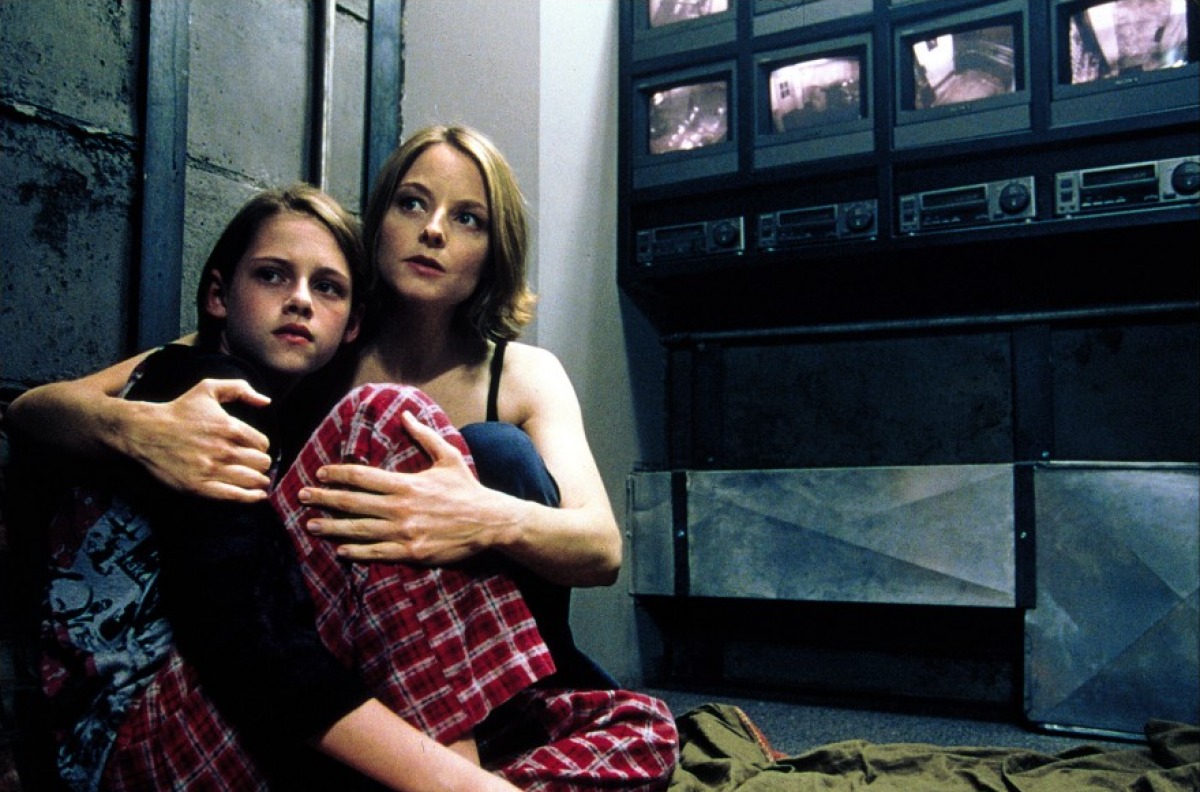
Scene: Panic Room follows one hellish night of survival for a mother and daughter who must fight off burglars searching for a fortune stashed in their new home. Near the beginning of the film, after putting her daughter to bed and settling down for the night, Meg Altman tosses and turns before eventually falling asleep – unaware that a group of criminals are creeping around outside, searching for a way into the house.
Implementing a digitally-edited tracking shot, the camera glides from Meg’s room upstairs, down through the four-story house, and lands at the bottom level where a man is seen getting out of a dark car and slinking up towards the front door. After a failed attempt at unlocking the door, he moves past his accomplice and heads around back.
Continuing to track through the bottom level of the house and past the kitchen, the camera stops at the backdoor and shows the man once again failing to get inside. He makes use of the back staircase and tries another door, but to no avail, and instead climbs up a fire ladder to the roof.
The camera takes us up through each floor of the house and stops to show Meg rustling around in bed before panning up to a skylight where the man is now sneaking past. Tracking back down the hallway, the camera ends its journey inside a nearby closet and reveals an opening in the roof that the man uses to finally enter.
Significance: It is easy to accept this scene as just a flamboyant expression of camerawork, ironic framing included, but its significance is much more rooted in Fincher’s overall intentions with Panic Room. As with his previous works, Fincher seems to be using this film as an exploration of various human emotions, in particular greed and paranoia, within the confines of an oft-considered familiar, yet skewed setting.
In Panic Room, this familiar setting is someone’s home – a new home for Meg and her daughter, Sarah – but this home also contains a secret paddock which was created for the sole purpose of keeping the homeowner in and others out.
The function of the tracking shot in this scene is to allow the camera to exist without restriction from the walls or floors. By ridding the scene of any stops or special blocks, the camera is forced to watch unblinkingly as the tension unfolds and subsequently acts as a sort of powerless bystander to the terror that befalls this mother and daughter. We as the audience take on this powerlessness when we watch a group of men circle their way around a family’s new home like vultures, scouring for any opportunity they can find to get inside.
7. Film: Zodiac (2007), The Killings in Napa Valley
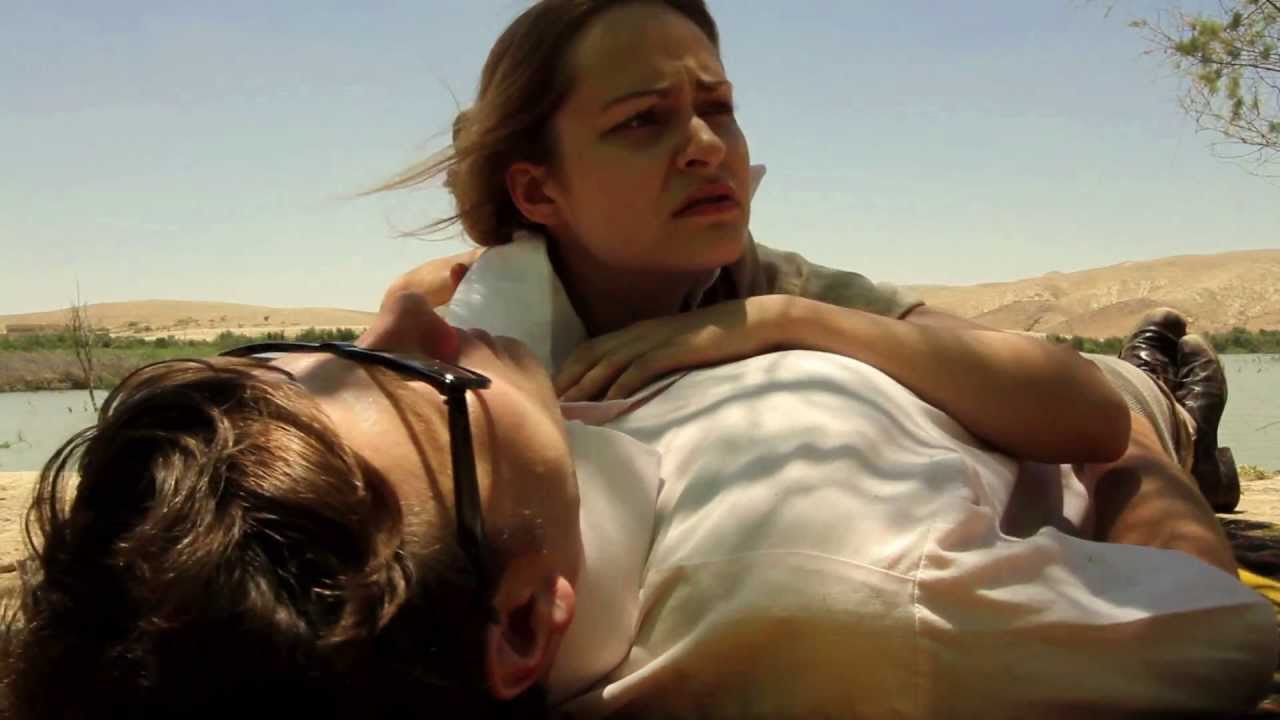
Scene: After revitalizing the genre with Se7en, Fincher’s glorious return to serial killer/detective thrillers came in 2007 with Zodiac, a true-crime influenced depiction of the Zodiac killings which plagued northern California for years. Told from the points of view of the journalists, detectives, and the Zodiac’s victims, the film explores both the horrific slayings as well as the general atmosphere of the times with exceptional depth and detail. One of these events took place around a lake in Napa Valley where two young people encountered the Zodiac and were subsequently bound, stabbed, and left for dead.
While the couple initially enjoys a scenic picnic by the lake, the Zodiac suddenly appears from behind a nearby tree and begins to intimidate them with a pistol. After dismissing the couple’s offering of money and the keys to their car, the Zodiac forces the woman to tie up her boyfriend and then ties the girl up himself.
With nothing left to bargain with, the couple is stuck lying in terror. They use their last moments to look into each other’s eyes before the Zodiac pulls out a knife and stabs the man in the back repeatedly. He then plunges the knife into the woman’s back and abdomen and here is where the carnage climatically ends. In what appears to be the same area but later in the day, the man is shown sitting beside a truck, barely alive, and the Zodiac’s call to the police is heard over top the unsettling image.
Significance: The slaughter in Napa Valley provides the film with its most gruesome scene and does so with a startling amount of soberness. Filmed in bright light with vivid clarity, the scene looks more like a dramatic art piece than a crime scene, but this certain amount of clarity makes the scene truly horrific once the violence begins. The camera holds tight on the couple’s faces and on the actions of Zodiac as he stabs his victims again and again.
The sheer barbarism of the act is captured in full and Fincher seems to refuse the audience a moment to breathe once the Zodiac makes his presence known. In this way, the Napa Valley killings represent Zodiac as a whole: setting up an artistically pleasing atmosphere, fillings that space with rich, complex characters, and then building palpable tension until the Zodiac enters the scene. Fincher’s direction has never felt more firmly established as it does here and his command of the story and characters is unquestionably stout.
8. Film: Zodiac (2007), The Basement
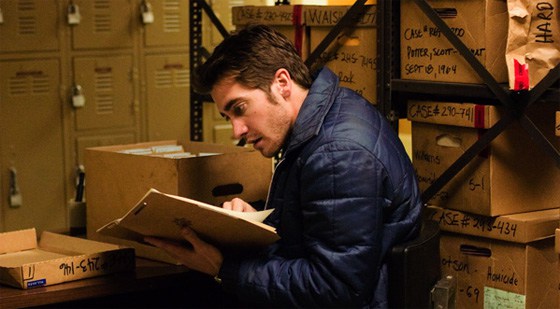
Scene: The identity of the Zodiac killer has never been officially confirmed, but many theories still surround the case and there are some individuals who have been involved since the very beginning who continue to believe one or two of the original main suspects were indeed the Zodiac.
One such suspect was a man named Rick Marshall, who became a lead suspect after authorities determined he had a past relationship with one of the victims and because his handwriting may have been as close a match to the Zodiac as any they had seen. Though Marshall was deemed to not be a match, cartoonist and Zodiac-aficionado Robert Graysmith refused to believe the man could be ruled out as a suspect entirely.
In what many fans see as the most intense scene in the film, Graysmith tracks down a colleague of Rick Marshall’s to discuss the appearance of his handwriting on a movie poster. After meeting up with Bob Vaughn (played to perfection by character actor Charles Fleischer) and following him back to an old house, Robert asks about the handwriting on the poster.
Bob reveals that the handwriting is not actually Marshall’s but rather his own, which immediately puts Robert on edge. Bob then asks Robert to join him in the basement (something investigators pointed out as a possible “workshop” for the Zodiac and a rarity in Californian homes). Robert cautiously follows Bob down to the basement, and anxiously runs back up once he believes someone else is in the house with them. Bob Vaughn is never seriously considered as a suspect, but the scene plays like right out of a horror movie and continues to creep the hell out of viewers.
Significance: Zodiac is never typically thought of as a horror film, and although it certainly contains horrifying aspects, it falls more closely in line with other crime dramas and historical thrillers than it does with your classic horror movie. Nonetheless, this particular scene evokes undeniable feelings of anxiety and dread, and uses our own imaginations against us to conjure up any number of horrific fates which could befall Robert in that basement. In some regards, this film acts as a spiritual-sequel to Se7en in the way that it uses the audiences’ deepest fears to create tension around the characters we have connected to the most.
Likewise, Fincher also implements many of the same visual cues and techniques that he used on Se7en to make these feelings of uneasiness inescapably deep. This includes the unnaturally tight close-ups of both characters’ faces as well as the low-level lighting effects which give the characters haunting shadows and reflections.
And once Robert and Bob are down in the basement, the extremely close quarters resemble that of John Doe’s maze-like apartment in which Detectives Somerset and Mills must search and navigate through. With Zodiac, Fincher not only successfully created a worthy follow-up to his remarkable sophomore feature; he also reinvigorated his sense of visual showmanship and produced what is arguably his greatest film yet.
9. Film: The Social Network (2010), Hacking Harvard
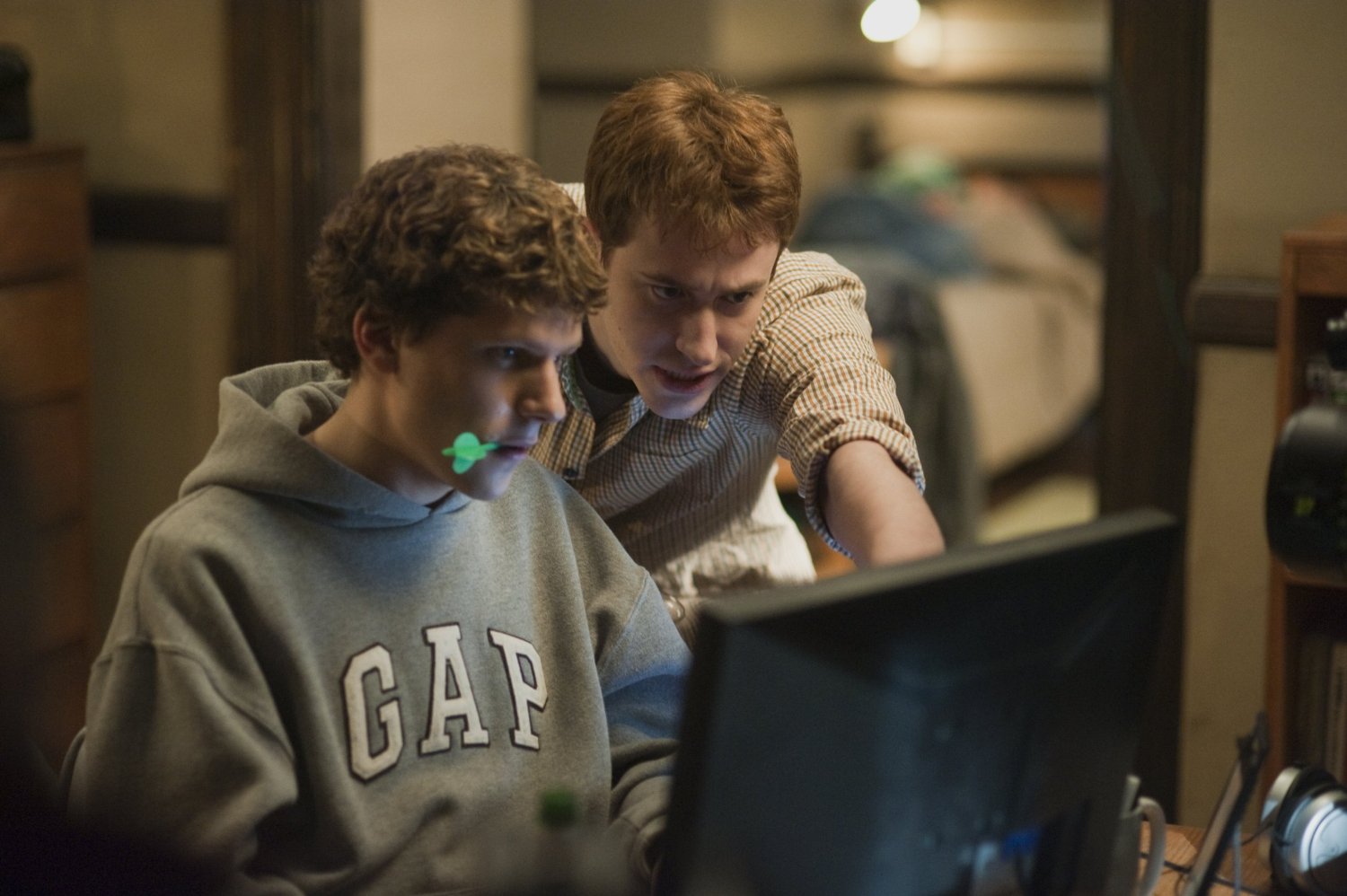
Scene: Mark Zuckerberg is quite the character in modern culture, representing both technical ingenuity and corporate manipulation. In The Social Network, David Fincher uses Zuckerberg’s story to depict a morally complex character, and does so by illuminating even the smallest of details regarding the creation of Facebook as well as by blurring the lines between Zuckerberg’s public and private personas. The scene which illustrates this most takes place early on in the film and shows Zuckerberg hacking into Harvard’s various school facebooks and configuring a network algorithm which will eventually lead to Facebook’s inception.
After getting dumped one night, Zuckerberg spends the rest of the evening getting drunk and airing his grievances about women on a personal blog. In the process of shaming this girl, he decides to work on a program which takes Harvard students’ facebook pictures and allows users to compare them based on attractiveness. Fincher then introduces us to the real star of the film – the magnificent score composed by Trent Reznor and Atticus Ross.
As their Oscar-winning composition takes us through a fraternity/sorority meetup happening across campus, the film begins to crosscut between here and Zuckerberg’s obsessive typing. He finally finishes the algorithm and unleashes it onto the Harvard student body, unaware of the epic highs and tragic lows that are to follow.
Significance: Fincher uses an array of visual imagery to take us inside the mind of one of the most prominent figures of the 21st century. This imagery ranges from close-ups of Zuckerberg’s manic programming to panning shots of young co-eds being herded into fraternity houses, all in an effort to give the audience a more lucid representation of these characters’ surroundings. It is important to see where Zuckerberg began in order to get a better understanding of how he achieved the position he is currently in now.
This scene also details how Zuckerberg’s motivations for creating what will eventually become Facebook may not have been entirely admirable. Fincher shows us that the inspiration for a revolutionary idea like this should never become lost in the loud societal commotion which can come afterwards, and that an idea is only as strong as the one who conceives of it.
The Social Network refuses to take a definitive side on this debate, but depicts enough evidence of Zuckerberg’s malicious business practices to give us a good indication of what this tech giant is willing to do for his company.
10. Film: The Girl with the Dragon Tattoo (2011), Lisbeth’s Revenge
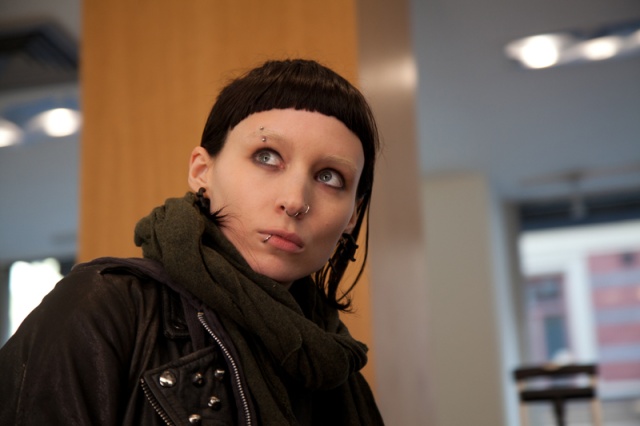
Scene: American remakes of well-established foreign films have a long history of inciting both cautiously optimistic hopes and the inevitable, utter disappointment (e.g. George Sluizer’s own remake of The Vanishing (1993) or Spike Lee’s Oldboy (2013)).
David Fincher’s The Girl with the Dragon Tattoo might have suffered a similar fate, but his remake of the popular Swedish film by Niels Arden Oplev is as gripping and grim as any of Fincher’s other work. Besides boasting an impressive cast, Fincher’s film captures the same level of intrigue for Mikael Blomkvist’s investigation and for Lisbeth Salander’s mysterious past, the latter of which contextualizes one of the more justifiably gruesome scenes in the film.
After being subjected to numerous sexually torturous and degrading acts at the hands of her new guardian, Lisbeth surprises her rapist at their next meeting by tasing him, stripping him, and tying him up to a bed post. She then proceeds to exact her revenge by assaulting him with a sex toy and branding him with a tattoo which exposes his sadistic crimes against women.
She also blackmails him with video evidence of her own assault and compels him into giving her complete control over her affairs. Lisbeth’s commitment to eye-for-an-eye justice is undeniably primal and Fincher uses this scene to effectively create an image of a female vigilantism in a world of misogyny and deplorable cruelty.
Significance: Lisbeth’s revenge scene punctuates many of the themes prevalent throughout the original “Girl…” series and which are similarly present in Fincher’s film, including violent misogyny, sexual repression, and the struggle of familial abandonment.
Lisbeth’s original guardian since childhood suffers a major stroke and becomes unable to care for her in the same way, so when her new guardian sexually harasses and assaults her, Lisbeth loses both a sense of companionship as well as a portion of her sexual identity. The heinous violence Lisbeth must endure from her guardian is inexpressibly monstrous, but tragically common for much of the world. Her vengeance is therefore deeply cathartic and sharply communicates an understandable rage which brews beneath.
Fincher’s direction expresses Lisbeth’s rage in two stark contrasts: the victim and the vigilante. In earlier scenes between Lisbeth and her guardian, she is framed in passive positions and barely shows any eye contact throughout, but her anger is no less evident.
Then in this scene, Lisbeth’s actions may suggest an irrepressible fury has control over her, but in actuality it is her first perceptible grasp of controlling the forces affecting her life. She is framed from below, giving her a powerful stance of authority as she carries out her revenge with a clear amount of lucidity and precision. Lisbeth is beginning to reclaim her autonomy from those who would strive to control it and Fincher is there to capture the scene in all its artistic glory.
Author Bio: Eric Nielson is an aspiring screenwriter and critic working in the U.S. He studies filmmaking in all its forms and has a penchant for P.T. Anderson, 70’s noir, and Mexican cinema.